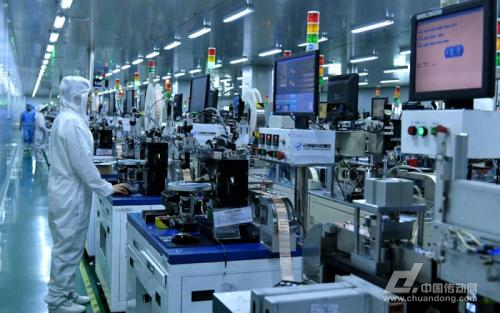On the 14th, the National Bureau of Statistics released data showing that in November, the national economy continued to maintain a stable and positive development trend. The production demand grew steadily, remained stable, the economic structure was constantly optimized, and the quality and efficiency continued to increase. In addition, structural reforms on the supply side continue to deepen, and new emerging kinetic energy has grown rapidly. De-capacity, destocking, and cost reduction have yielded significant results. From January to November, the added value of high-tech and equipment manufacturing increased by 13.5% and 11.4% year-on-year, respectively, and the growth rate was 6.9 and 4.8 percentage points faster than that of industries above designated size respectively.

In November, the added value of industries above designated size increased by 6.1% year-on-year. From January to November, the industrial added value of enterprises above designated size increased by 6.6% year-on-year, with the growth rate falling by 0.1 percentage point from January to October and accelerating by 0.6 percentage points over the same period of last year.
From the perspective of industry, the industry or manufacturing industry is moving toward the mid-to-high end of the industrial value chain. Jiang Yuan, senior statistician of the Department of Industry of the National Bureau of Statistics, read the industrial production data in November and said that the growth of high-tech industries has accelerated. In November, the added value of high-tech industries increased by 14.4% year-on-year, and the growth rate accelerated by 1.2% from October.
The growth of consumer goods manufacturing industry picked up. In November, the value-added of consumer goods manufacturing industry increased by 7% year-on-year, and the growth rate increased by 0.4% from October.
Equipment manufacturing industry maintained rapid growth. In November, the value-added of equipment manufacturing industry increased by 10.3% year-on-year, and the growth rate was 4.2% higher than that of all industries above designated size, and it continued to be in double digits.
The export growth of industrial products has accelerated noticeably. In November, the export value of industrial exports above designated size increased by 11.8% year-on-year, and the growth rate was 4.3% faster than that in October.
The leading effect of investment in high-end manufacturing industries has been highlighted. From January to November, the investment in high-tech manufacturing was 2363.8 billion yuan, an increase of 15.9%. The growth rate was 2.4 percentage points higher than that of the same period of last year and 11.8 percentage points higher than the total investment in manufacturing; the pace of investment in transformation and upgrading of traditional industries was accelerated.
The efficiency of enterprises maintained rapid growth. From January to October, the profits of industrial enterprises above designated size increased by 23.3% year-on-year, which was 0.5% faster than that in the first nine months of the year. The profit growth rate of service enterprises above designated size reached 29%.
New energy and new industries continue to grow. From January to November, the added value of high-tech and equipment manufacturing increased by 13.5% and 11.4% year-on-year, respectively, which was 6.9 and 4.8 percentage points higher than that of the above-scale industries, respectively. The output of industrial robots increased by 68.8% year-on-year, and new energy vehicles grew. 46.5%; In January-October, the operating income of strategic emerging services, producer services, and technology services increased by 17.5%, 14.9%, and 14.6% year-on-year, respectively, faster than the 3.8, 1.2, and 0.9 services of all scale-scale service industries. percentage point.
Consumption has become the main driving force for economic growth. In recent years, the contribution of consumption to economic growth has been more than 60%, and the contribution rate of the first three quarters of this year was 64.5%. Mao Shengyong, a spokesperson for the National Bureau of Statistics, said that this shows that in the past, economic growth relied more on investment and exports, and gradually shifted to relying more on consumption. This also indicated that the dynamic pattern of economic growth has undergone major changes.
Regarding the economic situation of the next year, Mao Shengyong said that the overall stable, stable, and positive trend of the current economic situation in China can continue for the next year.
â– Connection
Bank of Communications Chief Economist Lian Ping:
Investment still has great potential to be tapped
According to the Chief Economist of the Bank of Communications, Lien Ping, although there is little room for growth in fixed asset investment in China, due to the low efficiency of China’s investment, if we can continue to increase investment efficiency and improve investment structure, investment still has Big potential can be tapped.
Lian Ping said that from the perspective of China’s current per capita national income, the consumption of Chinese residents still has much room for growth. Compared with developed countries, or with BRICS countries of the same level of development, China's per capita national income level is not high, but per capita income is in a period of rapid growth, which will boost spending power. From the perspective of consumption in GDP, there is room for improvement in consumption.